Android的AlertDialog详解(android alterdialog)
来源: 最后更新:24-03-30 12:13:08
-
AlertDialog的构造方法全部是Protected的,所以不能直接通过new一个AlertDialog来创建出一个AlertDialog。
要创建一个AlertDialog,就要用到AlertDialog.Builder中的create()方法。
使用AlertDialog.Builder创建对话框需要了解以下几个方法:
setTitle :为对话框设置标题
setIcon :为对话框设置图标
setMessage:为对话框设置内容
setView : 给对话框设置自定义样式
setItems :设置对话框要显示的一个list,一般用于显示几个命令时
setMultiChoiceItems :用来设置对话框显示一系列的复选框
setNeutralButton :普通按钮
setPositiveButton :给对话框添加"Yes"按钮
setNegativeButton :对话框添加"No"按钮
create : 创建对话框
show :显示对话框
一、简单的AlertDialog
下面,创建一个简单的ALertDialog并显示它:[java] package com.tianjf;
import android.app.Activity;
import android.app.AlertDialog;
import android.app.Dialog;
import android.os.Bundle;public class Dialog_AlertDialogDemoActivity extends Activity {
/** Called when the activity is first created. */
@Override
public void onCreate(Bundle savedInstanceState) {
super.onCreate(savedInstanceState);
setContentView(R.layout.main);Dialog alertDialog = new AlertDialog.Builder(this).
setTitle("对话框的标题").
setMessage("对话框的内容").
setIcon(R.drawable.ic_launcher).
create();
alertDialog.show();
}
}
package com.tianjf;
import android.app.Activity;
import android.app.AlertDialog;
import android.app.Dialog;
import android.os.Bundle;
public class Dialog_AlertDialogDemoActivity extends Activity {
/** Called when the activity is first created. */
@Override
public void onCreate(Bundle savedInstanceState) {
super.onCreate(savedInstanceState);
setContentView(R.layout.main);
Dialog alertDialog = new AlertDialog.Builder(this).
setTitle("对话框的标题").
setMessage("对话框的内容").
setIcon(R.drawable.ic_launcher).
create();
alertDialog.show();
}
}运行结果如下:

二、带按钮的AlertDialog
上面的例子很简单,下面我们在这个AlertDialog上面加几个Button,实现删除操作的提示对话框[java] package com.tianjf;
import android.app.Activity;
import android.app.AlertDialog;
import android.app.Dialog;
import android.content.DialogInterface;
import android.os.Bundle;public class Dialog_AlertDialogDemoActivity extends Activity {
/** Called when the activity is first created. */
@Override
public void onCreate(Bundle savedInstanceState) {
super.onCreate(savedInstanceState);
setContentView(R.layout.main);Dialog alertDialog = new AlertDialog.Builder(this).
setTitle("确定删除?").
setMessage("您确定删除该条信息吗?").
setIcon(R.drawable.ic_launcher).
setPositiveButton("确定", new DialogInterface.OnClickListener() {@Override
public void onClick(DialogInterface dialog, int which) {
// TODO Auto-generated method stub
}
}).
setNegativeButton("取消", new DialogInterface.OnClickListener() {@Override
public void onClick(DialogInterface dialog, int which) {
// TODO Auto-generated method stub
}
}).
setNeutralButton("查看详情", new DialogInterface.OnClickListener() {@Override
public void onClick(DialogInterface dialog, int which) {
// TODO Auto-generated method stub
}
}).
create();
alertDialog.show();
}
}
package com.tianjf;
import android.app.Activity;
import android.app.AlertDialog;
import android.app.Dialog;
import android.content.DialogInterface;
import android.os.Bundle;
public class Dialog_AlertDialogDemoActivity extends Activity {
/** Called when the activity is first created. */
@Override
public void onCreate(Bundle savedInstanceState) {
super.onCreate(savedInstanceState);
setContentView(R.layout.main);
Dialog alertDialog = new AlertDialog.Builder(this).
setTitle("确定删除?").
setMessage("您确定删除该条信息吗?").
setIcon(R.drawable.ic_launcher).
setPositiveButton("确定", new DialogInterface.OnClickListener() {@Override
public void onClick(DialogInterface dialog, int which) {
// TODO Auto-generated method stub
}
}).
setNegativeButton("取消", new DialogInterface.OnClickListener() {@Override
public void onClick(DialogInterface dialog, int which) {
// TODO Auto-generated method stub
}
}).
setNeutralButton("查看详情", new DialogInterface.OnClickListener() {@Override
public void onClick(DialogInterface dialog, int which) {
// TODO Auto-generated method stub
}
}).
create();
alertDialog.show();
}
}在这个例子中,我们定义了三个按钮,分别是"Yes"按钮,"No"按钮以及一个普通按钮,每个按钮都有onClick事件,TODO的地方可以放点了按钮之后想要做的一些处理
看一下运行结果:
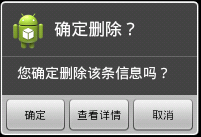
可以看到三个按钮添加到了AlertDialog上,三个没有添加事件处理的按钮,点了只是关闭对话框,没有任何其他操作。
三、类似ListView的AlertDialog
用setItems(CharSequence[] items, final OnClickListener listener)方法来实现类似ListView的AlertDialog
第一个参数是要显示的数据的数组,第二个参数是点击某个item的触发事件[java] package com.tianjf;
import android.app.Activity;
import android.app.AlertDialog;
import android.app.Dialog;
import android.content.DialogInterface;
import android.os.Bundle;
import android.widget.Toast;public class Dialog_AlertDialogDemoActivity extends Activity {
/** Called when the activity is first created. */
@Override
public void onCreate(Bundle savedInstanceState) {
super.onCreate(savedInstanceState);
setContentView(R.layout.main);final String[] arrayFruit = new String[] { "苹果", "橘子", "草莓", "香蕉" };
Dialog alertDialog = new AlertDialog.Builder(this).
setTitle("你喜欢吃哪种水果?").
setIcon(R.drawable.ic_launcher)
.setItems(arrayFruit, new DialogInterface.OnClickListener() {@Override
public void onClick(DialogInterface dialog, int which) {
Toast.makeText(Dialog_AlertDialogDemoActivity.this, arrayFruit[which], Toast.LENGTH_SHORT).show();
}
}).
setNegativeButton("取消", new DialogInterface.OnClickListener() {@Override
public void onClick(DialogInterface dialog, int which) {
// TODO Auto-generated method stub
}
}).
create();
alertDialog.show();
}
}
package com.tianjf;
import android.app.Activity;
import android.app.AlertDialog;
import android.app.Dialog;
import android.content.DialogInterface;
import android.os.Bundle;
import android.widget.Toast;
public class Dialog_AlertDialogDemoActivity extends Activity {
/** Called when the activity is first created. */
@Override
public void onCreate(Bundle savedInstanceState) {
super.onCreate(savedInstanceState);
setContentView(R.layout.main);
final String[] arrayFruit = new String[] { "苹果", "橘子", "草莓", "香蕉" };
Dialog alertDialog = new AlertDialog.Builder(this).
setTitle("你喜欢吃哪种水果?").
setIcon(R.drawable.ic_launcher)
.setItems(arrayFruit, new DialogInterface.OnClickListener() {@Override
public void onClick(DialogInterface dialog, int which) {
Toast.makeText(Dialog_AlertDialogDemoActivity.this, arrayFruit[which], Toast.LENGTH_SHORT).show();
}
}).
setNegativeButton("取消", new DialogInterface.OnClickListener() {
@Override
public void onClick(DialogInterface dialog, int which) {
// TODO Auto-generated method stub
}
}).
create();
alertDialog.show();
}
}运行结果如下:
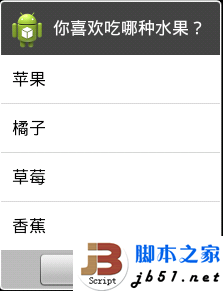
四、类似RadioButton的AlertDialog
用setSingleChoiceItems(CharSequence[] items, int checkedItem, final OnClickListener listener)方法来实现类似RadioButton的AlertDialog
第一个参数是要显示的数据的数组,第二个参数是初始值(初始被选中的item),第三个参数是点击某个item的触发事件
在这个例子里面我们设了一个selectedFruitIndex用来记住选中的item的index[java] package com.tianjf;
import android.app.Activity;

import android.app.AlertDialog;
import android.app.Dialog;
import android.content.DialogInterface;
import android.os.Bundle;
import android.widget.Toast;public class Dialog_AlertDialogDemoActivity extends Activity {
private int selectedFruitIndex = 0;
/** Called when the activity is first created. */
@Override
public void onCreate(Bundle savedInstanceState) {
super.onCreate(savedInstanceState);
setContentView(R.layout.main);final String[] arrayFruit = new String[] { "苹果", "橘子", "草莓", "香蕉" };
Dialog alertDialog = new AlertDialog.Builder(this).
setTitle("你喜欢吃哪种水果?").
setIcon(R.drawable.ic_launcher)
.setSingleChoiceItems(arrayFruit, 0, new DialogInterface.OnClickListener() {@Override
public void onClick(DialogInterface dialog, int which) {
selectedFruitIndex = which;
}
}).
setPositiveButton("确认", new DialogInterface.OnClickListener() {@Override
public void onClick(DialogInterface dialog, int which) {
Toast.makeText(Dialog_AlertDialogDemoActivity.this, arrayFruit[selectedFruitIndex], Toast.LENGTH_SHORT).show();
}
}).
setNegativeButton("取消", new DialogInterface.OnClickListener() {@Override
public void onClick(DialogInterface dialog, int which) {
// TODO Auto-generated method stub
}
}).
create();
alertDialog.show();
}
}
package com.tianjf;
import android.app.Activity;
import android.app.AlertDialog;
import android.app.Dialog;
import android.content.DialogInterface;
import android.os.Bundle;
import android.widget.Toast;
public class Dialog_AlertDialogDemoActivity extends Activity {private int selectedFruitIndex = 0;
/** Called when the activity is first created. */
@Override
public void onCreate(Bundle savedInstanceState) {
super.onCreate(savedInstanceState);
setContentView(R.layout.main);
final String[] arrayFruit = new String[] { "苹果", "橘子", "草莓", "香蕉" };
Dialog alertDialog = new AlertDialog.Builder(this).
setTitle("你喜欢吃哪种水果?").
setIcon(R.drawable.ic_launcher)
.setSingleChoiceItems(arrayFruit, 0, new DialogInterface.OnClickListener() {@Override
public void onClick(DialogInterface dialog, int which) {
selectedFruitIndex = which;
}
}).
setPositiveButton("确认", new DialogInterface.OnClickListener() {
@Override
public void onClick(DialogInterface dialog, int which) {
Toast.makeText(Dialog_AlertDialogDemoActivity.this, arrayFruit[selectedFruitIndex], Toast.LENGTH_SHORT).show();
}
}).
setNegativeButton("取消", new DialogInterface.OnClickListener() {
@Override
public void onClick(DialogInterface dialog, int which) {
// TODO Auto-generated method stub
}
}).
create();
alertDialog.show();
}
}
运行结果如下:
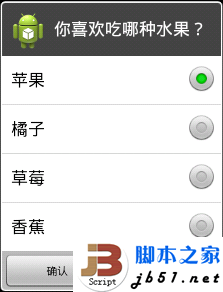
五、类似CheckBox的AlertDialog
用setMultiChoiceItems(CharSequence[] items, boolean[] checkedItems, final OnMultiChoiceClickListener listener)方法来实现类似CheckBox的AlertDialog
第一个参数是要显示的数据的数组,第二个参数是选中状态的数组,第三个参数是点击某个item的触发事件[java] package com.tianjf;
import android.app.Activity;
import android.app.AlertDialog;
import android.app.Dialog;
import android.content.DialogInterface;
import android.os.Bundle;
import android.widget.Toast;public class Dialog_AlertDialogDemoActivity extends Activity {
/** Called when the activity is first created. */
@Override
public void onCreate(Bundle savedInstanceState) {
super.onCreate(savedInstanceState);
setContentView(R.layout.main);final String[] arrayFruit = new String[] { "苹果", "橘子", "草莓", "香蕉" };
final boolean[] arrayFruitSelected = new boolean[] {true, true, false, false};Dialog alertDialog = new AlertDialog.Builder(this).
setTitle("你喜欢吃哪种水果?").
setIcon(R.drawable.ic_launcher)
.setMultiChoiceItems(arrayFruit, arrayFruitSelected, new DialogInterface.OnMultiChoiceClickListener() {@Override
public void onClick(DialogInterface dialog, int which, boolean isChecked) {
arrayFruitSelected[which] = isChecked;
}
}).
setPositiveButton("确认", new DialogInterface.OnClickListener() {@Override
public void onClick(DialogInterface dialog, int which) {
StringBuilder stringBuilder = new StringBuilder();
for (int i = 0; i < arrayFruitSelected.length; i++) {
if (arrayFruitSelected[i] == true)
{
stringBuilder.append(arrayFruit[i] + "、");
}
}
Toast.makeText(Dialog_AlertDialogDemoActivity.this, stringBuilder.toString(), Toast.LENGTH_SHORT).show();
}
}).
setNegativeButton("取消", new DialogInterface.OnClickListener() {@Override
public void onClick(DialogInterface dialog, int which) {
// TODO Auto-generated method stub
}
}).
create();
alertDialog.show();
}
}
package com.tianjf;
import android.app.Activity;
import android.app.AlertDialog;
import android.app.Dialog;
import android.content.DialogInterface;
import android.os.Bundle;
import android.widget.Toast;
public class Dialog_AlertDialogDemoActivity extends Activity {
/** Called when the activity is first created. */
@Override
public void onCreate(Bundle savedInstanceState) {
super.onCreate(savedInstanceState);
setContentView(R.layout.main);
final String[] arrayFruit = new String[] { "苹果", "橘子", "草莓", "香蕉" };
final boolean[] arrayFruitSelected = new boolean[] {true, true, false, false};
Dialog alertDialog = new AlertDialog.Builder(this).
setTitle("你喜欢吃哪种水果?").
setIcon(R.drawable.ic_launcher)
.setMultiChoiceItems(arrayFruit, arrayFruitSelected, new DialogInterface.OnMultiChoiceClickListener() {@Override
public void onClick(DialogInterface dialog, int which, boolean isChecked) {
arrayFruitSelected[which] = isChecked;
}
}).
setPositiveButton("确认", new DialogInterface.OnClickListener() {
@Override
public void onClick(DialogInterface dialog, int which) {
StringBuilder stringBuilder = new StringBuilder();
for (int i = 0; i < arrayFruitSelected.length; i++) {
if (arrayFruitSelected[i] == true)
{
stringBuilder.append(arrayFruit[i] + "、");
}
}
Toast.makeText(Dialog_AlertDialogDemoActivity.this, stringBuilder.toString(), Toast.LENGTH_SHORT).show();
}
}).
setNegativeButton("取消", new DialogInterface.OnClickListener() {
@Override
public void onClick(DialogInterface dialog, int which) {
// TODO Auto-generated method stub
}
}).
create();
alertDialog.show();
}
}运行结果如下:
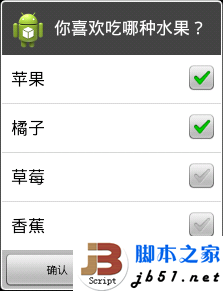
六、自定义View的AlertDialog
有时候我们不能满足系统自带的AlertDialog风格,就比如说我们要实现一个Login画面,有用户名和密码,这时我们就要用到自定义View的AlertDialog
先创建Login画面的布局文件
[html] <?xml version="1.0" encoding="utf-8"?>
<LinearLayout xmlns:android="http://schemas.android.com/apk/res/android"
android:layout_width="fill_parent"
android:layout_height="fill_parent"
android:orientation="vertical" ><LinearLayout
android:layout_width="fill_parent"
android:layout_height="wrap_content"
android:gravity="center" ><TextView
android:layout_width="0dip"
android:layout_height="wrap_content"
android:layout_weight="1"
android:text="@string/user" /><EditText
android:layout_width="0dip"
android:layout_height="wrap_content"
android:layout_weight="1" />
</LinearLayout><LinearLayout
android:layout_width="fill_parent"
android:layout_height="wrap_content"
android:gravity="center" ><TextView
android:layout_width="0dip"
android:layout_height="wrap_content"
android:layout_weight="1"
android:text="@string/passward" /><EditText
android:layout_width="0dip"
android:layout_height="wrap_content"
android:layout_weight="1" />
</LinearLayout></LinearLayout>
<?xml version="1.0" encoding="utf-8"?>
<LinearLayout xmlns:android="http://schemas.android.com/apk/res/android"
android:layout_width="fill_parent"
android:layout_height="fill_parent"
android:orientation="vertical" >
<LinearLayout
android:layout_width="fill_parent"
android:layout_height="wrap_content"
android:gravity="center" >
<TextView
android:layout_width="0dip"
android:layout_height="wrap_content"
android:layout_weight="1"
android:text="@string/user" />
<EditText
android:layout_width="0dip"
android:layout_height="wrap_content"
android:layout_weight="1" />
</LinearLayout>
<LinearLayout
android:layout_width="fill_parent"
android:layout_height="wrap_content"
android:gravity="center" >
<TextView
android:layout_width="0dip"
android:layout_height="wrap_content"
android:layout_weight="1"
android:text="@string/passward" />
<EditText
android:layout_width="0dip"
android:layout_height="wrap_content"
android:layout_weight="1" />
</LinearLayout>
</LinearLayout>
然后在Activity里面把Login画面的布局文件添加到AlertDialog上
[java] package com.tianjf;import android.app.Activity;
import android.app.AlertDialog;
import android.app.Dialog;
import android.content.DialogInterface;
import android.os.Bundle;
import android.view.LayoutInflater;
import android.view.View;public class Dialog_AlertDialogDemoActivity extends Activity {
/** Called when the activity is first created. */
@Override
public void onCreate(Bundle savedInstanceState) {
super.onCreate(savedInstanceState);
setContentView(R.layout.main);// 取得自定义View
LayoutInflater layoutInflater = LayoutInflater.from(this);
View myLoginView = layoutInflater.inflate(R.layout.login, null);Dialog alertDialog = new AlertDialog.Builder(this).
setTitle("用户登录").
setIcon(R.drawable.ic_launcher).
setView(myLoginView).
setPositiveButton("登录", new DialogInterface.OnClickListener() {@Override
public void onClick(DialogInterface dialog, int which) {
// TODO Auto-generated method stub
}
}).
setNegativeButton("取消", new DialogInterface.OnClickListener() {@Override
public void onClick(DialogInterface dialog, int which) {
// TODO Auto-generated method stub
}
}).
create();
alertDialog.show();
}
}
package com.tianjf;
import android.app.Activity;
import android.app.AlertDialog;
import android.app.Dialog;
import android.content.DialogInterface;
import android.os.Bundle;
import android.view.LayoutInflater;
import android.view.View;
public class Dialog_AlertDialogDemoActivity extends Activity {
/** Called when the activity is first created. */
@Override
public void onCreate(Bundle savedInstanceState) {
super.onCreate(savedInstanceState);
setContentView(R.layout.main);
// 取得自定义View
LayoutInflater layoutInflater = LayoutInflater.from(this);
View myLoginView = layoutInflater.inflate(R.layout.login, null);Dialog alertDialog = new AlertDialog.Builder(this).
setTitle("用户登录").
setIcon(R.drawable.ic_launcher).
setView(myLoginView).
setPositiveButton("登录", new DialogInterface.OnClickListener() {
@Override
public void onClick(DialogInterface dialog, int which) {
// TODO Auto-generated method stub
}
}).
setNegativeButton("取消", new DialogInterface.OnClickListener() {
@Override
public void onClick(DialogInterface dialog, int which) {
// TODO Auto-generated method stub
}
}).
create();
alertDialog.show();
}
}运行结果如下:
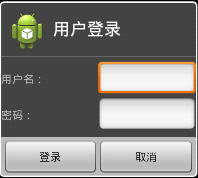
摘自 殇?的专栏免责声明:本文系转载,版权归原作者所有;旨在传递信息,其原创性以及文中陈述文字和内容未经本站证实。
想生女儿不要"迷信" 听送福女儿再谈生女儿那些事 说句实话,当今时代的确是进步了,越来越多的家庭都开始追捧“养儿
点击查看——什么药缩阴最好最快 泰东方国际与马来西亚MHTC共建海外试管婴儿新模式! 早孕检测三步曲 不上医院也能轻松搞定 我来揭露!什么缩阴产品安全有效热门标签
热门文章
-
刷机神器 刷机神器怎么使用 24-03-30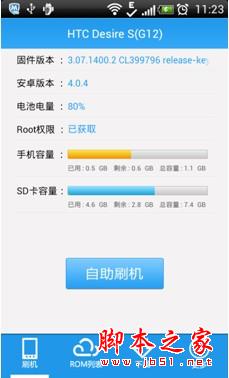
-
下地笼捉虾绝招(下地笼捉虾绝招药水方法) 24-03-30
-
12岁可以自己坐高铁吗(12岁可以自己坐高铁吗) 24-03-30
-
12333可以解决哪些事(12333人工服务上班时间) 24-03-30
-
五毒是什么 五毒是什么意思 24-03-29
-
奔驰e300l功能使用技巧是什么 奔驰e300l功能使用技巧是什么样的 24-03-29
-
雪佛兰全新迈锐宝xl自动启停 雪佛兰迈锐宝xl自动启停失效 24-03-29
-
众泰t600二手为什么便宜(众泰t600车有什么缺点) 24-03-29
-
宝来怎么使用手自一体 宝来手自一体的车手动挡怎样使用 24-03-29
-
男士减肥妙招 男士减肥怎么减 24-03-29















